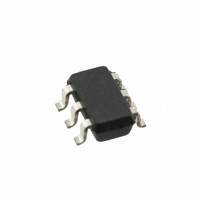AT42QT1010-TSHR Atmel, AT42QT1010-TSHR Datasheet - Page 8

AT42QT1010-TSHR
Manufacturer Part Number
AT42QT1010-TSHR
Description
IC TOUCH SENSOR 1KEY SOT23-6
Manufacturer
Atmel
Series
QTouch™r
Type
Capacitiver
Datasheets
1.AT42QT1012-TSHR.pdf
(4 pages)
2.AT42QT1010-TSHR.pdf
(22 pages)
3.AT42QT1010-TSHR.pdf
(20 pages)
Specifications of AT42QT1010-TSHR
Touch Panel Interface
1, 2-Wire
Number Of Inputs/keys
1 Key
Resolution (bits)
9, 14 b
Data Interface
Serial
Voltage Reference
Internal
Voltage - Supply
1.8 V ~ 5.5 V
Current - Supply
219µA
Operating Temperature
-40°C ~ 85°C
Mounting Type
Surface Mount
Package / Case
SOT-23-6
Output Type
Logic
Interface
Digital
Input Type
Logic
Supply Current
729µA
Supply Voltage Range
1.8V To 5.5V
Sensor Case Style
SOT-23
No. Of Pins
6
Operating Temperature Range
-40°C To +85°C
Svhc
No SVHC (15-Dec-2010)
Rohs Compliant
Yes
Lead Free Status / RoHS Status
Lead free / RoHS Compliant
Other names
AT42QT1010-TSHRTR
Available stocks
Company
Part Number
Manufacturer
Quantity
Price
Part Number:
AT42QT1010-TSHR
Manufacturer:
ATMEL/爱特梅尔
Quantity:
20 000
3.7
3.8
3.9
3.9.1
3.9.2
8
Response Time
Spread Spectrum
Output Features
AT42QT1010
Output
HeartBeat
™
Output
Figure 3-5.
The QT1010's drift compensation is asymmetric; the reference level drift-compensates in one
direction faster than it does in the other. Specifically, it compensates faster for decreasing
signals than for increasing signals. Increasing signals should not be compensated for quickly,
since an approaching finger could be compensated for partially or entirely before even
approaching the sense electrode. However, an obstruction over the sense pad, for which the
sensor has already made full allowance, could suddenly be removed leaving the sensor with an
artificially elevated reference level and thus become insensitive to touch. In this latter case, the
sensor will compensate for the object's removal very quickly, usually in only a few seconds.
With large values of Cs and small values of Cx, drift compensation will appear to operate more
slowly than with the converse. Note that the positive and negative drift compensation rates are
different.
The QT1010's response time is highly dependent on run mode and burst length, which in turn is
dependent on Cs and Cx. With increasing Cs, response time slows, while increasing levels of Cx
reduce response time. The response time will also be a lot slower in LP or SYNC mode due to a
longer time between burst measurements.
The QT1010 modulates its internal oscillator by ±7.5 percent during the measurement burst.
This spreads the generated noise over a wider band, reducing emission levels. This also
reduces susceptibility since there is no longer a single fundamental burst frequency.
The output of the QT1010 is active-high upon detection. The output will remain active-high for
the duration of the detection, or until the Max On-duration expires, whichever occurs first. If a
Max On-duration timeout occurs first, the sensor performs a full recalibration and the output
becomes inactive (low) until the next detection.
The QT1010 output has a HeartBeat “health” indicator superimposed on it in all modes. This
operates by taking the output pin into a three-state mode for 15 µs, once before every QT burst.
This output state can be used to determine that the sensor is operating properly, using one of
several simple methods, or it can be ignored.
Threshold
Output
Drift Compensation
S ignal
R eference
H ysteresis
9541G–AT42–03/10













